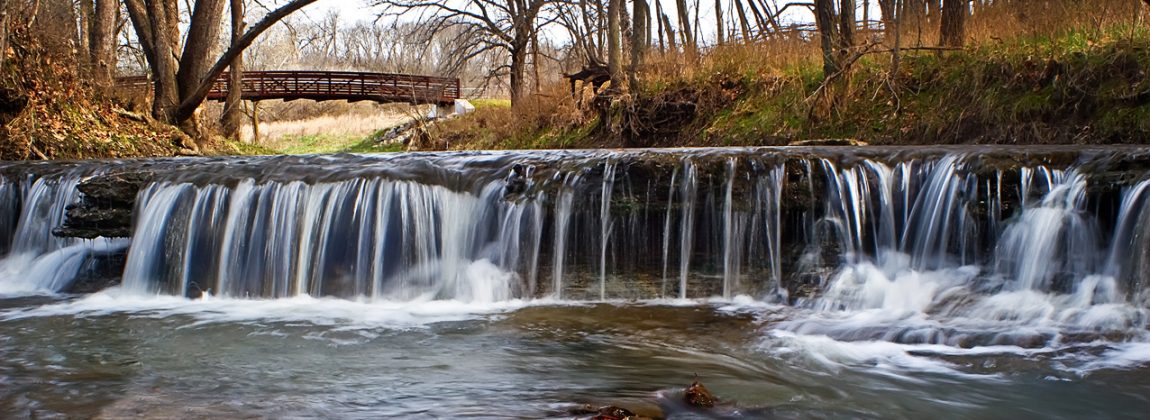Each of the three animals depicted on the Missouri Conservation Heritage license plates tells a story about conservation challenges, environmental success and the responsibility of Missourians to ensure the continued presence of wildlife species in our state.
Bald Eagle
Nationally renowned Missouri wildlife artist Al Agnew donated the eagle artwork for the license plate from his painting “Spirit of Freedom.” The dramatic image helps demonstrate Missouri’s role in national conservation efforts.
“Bringing our national emblem back as a year-round resident to states where it had disappeared is something Americans can celebrate,” said Missouri Conservation Heritage Foundation retired Executive Director Rick Thom, “and bald eagle conservation efforts in Missouri are a significant part of this success story.” In 2007, bald eagles were removed from the federal endangered species list, with more than 10,000 pairs of the birds nesting in the U.S., and about 150 nests in Missouri.
Facts about bald eagles:
• In flight, bald eagles hold their wings straight and flat.
• Bald eagle nests, up to 7 feet across and 10 feet deep, are the largest in the bird world. Made of sticks and constructed in sycamores, cottonwoods and bald cypress trees, the nests are used year after year by the same birds.
• Bald eagles eat fish, mussels, crayfish, waterfowl, rabbits, muskrats and foxes. However, these resourceful birds will usually feed on carrion and may even forage in dumps.
• In 1978, bald eagles were placed on the federal endangered species list. Pesticides persisting for decades in the environment, loss of habitat and illegal shooting of the birds had caused their populations to plummet. While the banning of DDT, legal protection and habitat restoration have helped the birds make a nationwide comeback, their past federal listing is a reminder of how diligently we must work to conserve our natural treasures to ensure their survival.
• More information on bald eagle natural history and bald eagle viewing events is available from the Missouri Department of Conservation.
Eastern Bluebird
On March 30, 1927, the eastern bluebird was officially designated the Missouri state bird by an act of the Missouri Legislature because it was “common in Missouri” and “a symbol of happiness.” Found throughout the state, bluebirds frequent rural grasslands where there are scattered trees—such as Missouri’s state tree, the flowering dogwood—for perching and nesting. They also live where there are large lawns, like cemeteries, golf courses and parks. Historically, they were associated with savannas, which are open woodlands with an understory of grasses and wildflowers.
More bluebird natural history is available from the Missouri Department of Conservation.
White-tailed Deer
The white-tailed deer is one of Missouri’s most valuable wildlife resources. Each year, hunters spend around three million hunter-days in the field pursuing the whitetail, contributing millions of dollars to the economy in the process. Public viewing of deer attracts thousands of visitors to Missouri’s public lands annually.
The history of white-tailed deer in Missouri—like that of eagles and bluebirds—shows positive and negative influences humans can have on wildlife. During presettlement times, the whitetail was abundant in Missouri, especially in the more fertile and diverse habitats of northern Missouri. The influx of European settlers to Missouri during the last half of the nineteenth century coincided with a rapid decline in the deer population. Market hunting, habitat destruction and unsustainable land use all contributed to the whitetail’s decline.
In 1925, the state’s deer herd was estimated to be only around 400. In response to these findings, the Missouri State Legislature declared deer season closed and made the first substantial effort to enforce its regulation. At the same time, deer brought to Missouri from Michigan were released onto five refuges in the Ozarks. In 1931, deer season reopened but resulted in a small harvest, which indicated a low population that was stable or declining.
Only when the first Conservation Commission formed in 1937 did significant efforts to restore the whitetail begin to succeed. The Commission closed deer hunting season from 1938 to 1943. During this closure, additional deer were stocked from Wisconsin, Michigan, Minnesota and from existing refuges within the state. Enforcement of the Wildlife Code of Missouri by professionally trained conservation agents helped deter poaching.
By 1944, the statewide deer population soared to 15,000, and Missouri held its first deer season since the recovery effort had begun. Between 1944 and 1951, hunting was restricted to bucks only to allow deer populations to grow. In 1951, limited doe harvests were initiated.
The story since then is clear: Early management promoted continued population growth that in turn was accompanied by people’s growing interest in deer hunting. Today, Missouri’s deer population is estimated at 1.4 million animals. Recent management efforts have attempted to define optimal population levels and design hunting regulations to achieve them. The success of the deer program is a tribute to Missourians’ support of their natural resources and to the adaptability of the white-tailed deer to human-altered habitats.
The Missouri Department of Conservation provides more information on deer hunting and white-tailed deer natural history.








